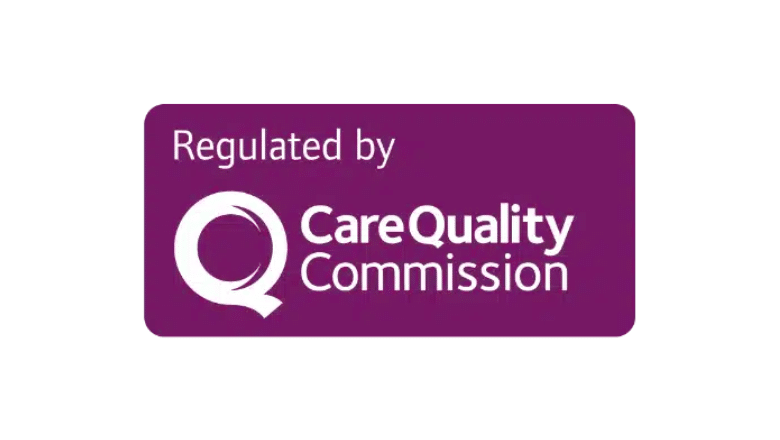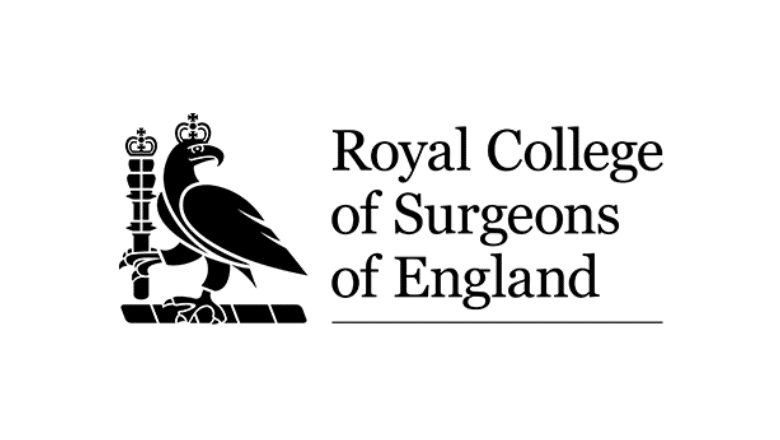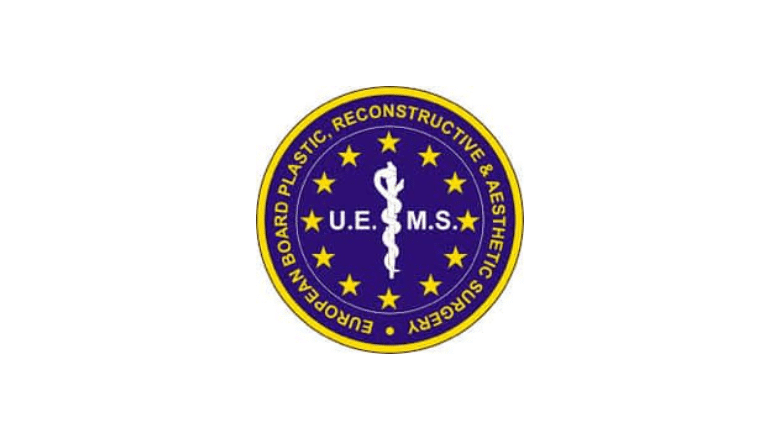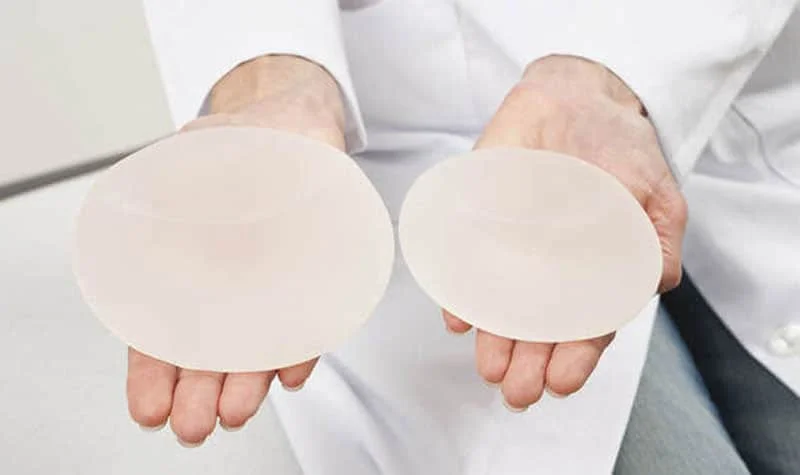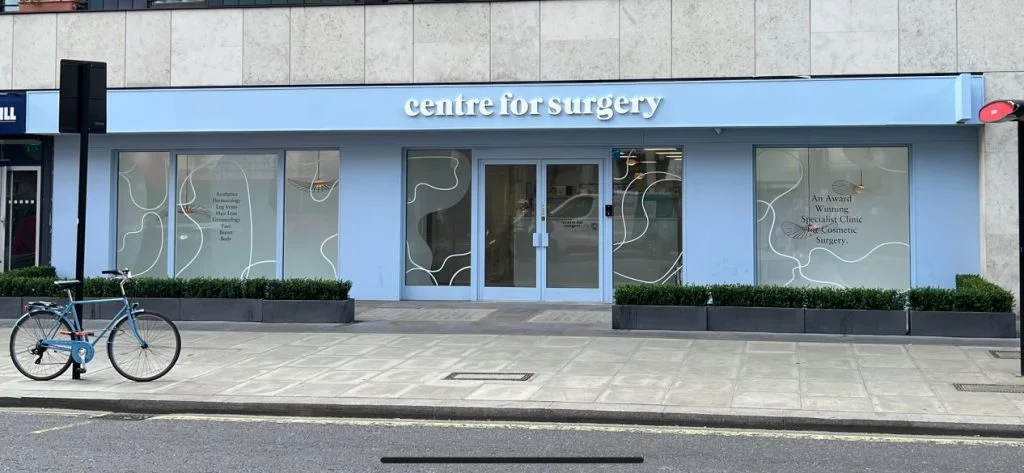-
PROCEDURES
-
NOSE SURGERY
- Rhinoplasty (Nose Job)
- Tip Rhinoplasty (Tip Plasty)
- Alar Base Reduction (Alarplasty)
- Septoplasty
- Turbinate Reduction
- Septorhinoplasty
- Ethnic Rhinoplasty
- Ultrasonic Rhinoplasty
- Preservation Rhinoplasty
- Revision Rhinoplasty
- Male Rhinoplasty (Nose Job for Men)
- One Stitch Nose Lift
- Nose Surgery FAQs
- Rhinoplasty Gallery
- Non Surgical Rhinoplasty
- Rhinophyma Surgery
- Laser Snoring Treatment (NightLase)
-
EYELIDS & FOREHEAD
- Blepharoplasty (Eyelid Surgery)
- Upper Eyelid Surgery
- Lower Eyelid Surgery
- Canthoplasty (Almond Eye Surgery)
- Asian Blepharoplasty (Double Eyelid Surgery)
- Revision Blepharoplasty
- Male Eyelid Surgery (Blepharoplasty for Men)
- Eyelid Surgery FAQs
- Blepharoplasty Gallery
- Tear Trough Filler (Under Eye Filler)
- SmoothEye Laser Treatment
- AccuTite
- Micro & Nano Fat Grafting
- Brow Lift (Forehead Lift)
- Endoscopic Brow Lift
- Temporal Brow Lift (Lateral Brow Lift)
- Hairline Lowering Surgery
- Forehead Contouring Surgery
- Osteoma Removal
-
FACE SURGERY
- Full Facelift & Neck Lift
- SMAS Facelift
- Deep Plane Facelift
- Mid Facelift (Cheek Lift)
- Lower Facelift (Jowl Lift)
- Mini Facelift
- One Stitch Facelift
- Revision Facelift
- Male Facelift
- Neck Lift
- Mini Neck Lift
- Male Neck Lift
- Facial Fat Transfer
- Chin & Neck Liposuction
- FaceTite
- Lip Lift
- Lip Reduction Surgery
- Dimple Creation (Dimpleplasty)
- Buccal Fat Removal
- Chin Surgery (Genioplasty)
- Chin Augmentation
- Chin Reduction
- Male Chin Surgery
- EAR SURGERY
-
BREAST SURGERY
- Breast Augmentation with Implants
- Mini Boob Job (Mini Breast Augmentation)
- Breast Implant Options
- Breast Implant Check
- Breast Implant Removal (Explant)
- Breast Implant Removal & Breast Lift
- Breast Implant Replacement
- Breast Implant Revision
- Fat Transfer Breast Augmentation
- Hybrid Breast Augmentation
- Breast Lift (Mastopexy)
- Breast Lift with Implants
- Breast Lift with Auto-Augmentation
- Mini Breast Lift (Doughnut Mastopexy)
- Breast Reduction
- Liposuction Breast Reduction
- Inverted Nipple Correction
- Nipple Reduction
- Areola Reduction
- Breast Asymmetry Correction
- Tuberous Breast Correction
- Male Breast Reduction
- Gynecomastia Surgery
- Pectoral Implants
- Chest Wall Implants
- Pectus Excavatum Implant
- Poland Syndrome Implant
-
BODY SURGERY
- Ultrasound Assisted Liposuction
- Argo Plasma Skin Tightening
- BodyTite
- Liposuction
- Stomach Liposuction (Tummy Lipo)
- 360 Liposuction
- Micro Liposuction (MicroLipo)
- Tummy Tuck (Abdominoplasty)
- Brazilian Tummy Tuck (Lipoabdominoplasty)
- Mini Tummy Tuck
- Umbilicoplasty (Belly Button Surgery)
- Mons Lift (Monsplasty)
- C Section Scar Revision
- Body Contouring Procedures
- Fat Transfer (Fat Grafting)
- Mummy Makeover
- Calf Augmentation with Implants
- Fat Transfer Calf Augmentation
-
BUTTOCK CONTOURING
- Brazilian Butt Lift (BBL Surgery)
- Skinny BBL
- Ultrasound Guided BBL
- 360 Lipo and BBL
- Mini BBL
- Revision BBL
- Male BBL (Brazilian Butt Lift for Men)
- Brazilian Butt Lift FAQs
- Brazilian Butt Lift (BBL) Photos
- BBL Recovery Guide
- Non-Surgical Butt Lift (HYAcorp)
- Buttock Implants
- Butt Implant Removal
- Butt Implants vs BBL
-
COSMETIC GYNAECOLOGY
- Labiaplasty (Labia Reduction)
- Clitoral Hood Reduction (Hoodectomy)
- Labia Fat Transfer
- Labiaplasty Photo Gallery
- Labiaplasty FAQs
- Labiaplasty Revision & Reconstruction
- Mons Lift (Monsplasty)
- Vaginoplasty (Vaginal Tightening Surgery)
- Perineoplasty
- Pelvic Floor Repair
- Vaginal Rejuvenation
- Non Surgical Vaginal Tightening
- Vaginal Laser Treatment
- IntimaLase (Vaginal Tightening)
- IncontiLase (Urinary Incontinence)
- ProlapLase (Pelvic Prolapse)
- RenovaLase (Vaginal Dryness)
- Labia Puffing (Labial Puff)
- O Shot Injection
- G Spot Injection (G Shot)
-
POST PREGNANCY SURGERY
- Mummy Makeover
- Mummy Makeover Photo Gallery
- Mummy Makeover FAQs
- Argo Plasma Skin Tightening
- Breast Lift (Mastopexy)
- Breast Lift with Implants
- Breast Augmentation with Implants
- Tummy Tuck (Abdominoplasty)
- Brazilian Tummy Tuck (Lipoabdominoplasty)
- Mini Tummy Tuck
- Mons Lift (Monsplasty)
- C Section Scar Revision
- Liposuction
- Stomach Liposuction (Tummy Lipo)
- 360 Liposuction
- Brazilian Butt Lift (BBL Surgery)
- Labiaplasty (Labia Reduction)
- Vaginoplasty (Vaginal Tightening Surgery)
- Non Surgical Vaginal Tightening
- Vaginal Laser Treatment
-
POST WEIGHT LOSS SURGERY
- Body Contouring After Weight Loss
- Excess Skin Removal Surgery
- Argo Plasma Skin Tightening
- Tummy Tuck (Abdominoplasty)
- Mons Lift (Monsplasty)
- Extended Tummy Tuck
- Fleur de Lis Tummy Tuck
- Apronectomy (Panniculectomy)
- Breast Lift (Mastopexy)
- Arm Lift (Brachioplasty)
- Thigh Lift (Thigh Reduction)
- Buttock Lift (Gluteal Lift)
- Lower Back Lift
- Bra Line Back Lift
- Upper Body Lift
- Lower Body Lift
- Belt Lipectomy
- Male Body Lift
-
MALE SURGERY
- Gynecomastia Surgery
- Male Breast Reduction
- Argo Plasma Skin Tightening
- High Definition Liposuction (HD Lipo)
- Abdominal Etching
- Male Liposuction (Lipo for Men)
- Male Tummy Tuck (Abdominoplasty for Men)
- Pectoral Implants
- Chest Wall Implants
- Pectus Excavatum Implant
- Poland Syndrome Implant
- Calf Augmentation with Implants
- Fat Transfer Calf Augmentation
- Male BBL (Brazilian Butt Lift for Men)
- Male Body Lift
- Male Rhinoplasty (Nose Job for Men)
- Laser Snoring Treatment (NightLase)
- Rhinophyma Surgery
- Male Eyelid Surgery (Blepharoplasty for Men)
- Male Facelift
- Male Neck Lift
- Male Chin Surgery
-
GENDER SURGERY 🏳️⚧️
- FTM/N Top Surgery
- Non-Binary Surgery
- FTM Top Surgery Before & After Photos
- Double Incision Top Surgery
- Nipple-Sparing Double Incision Top Surgery
- Keyhole Top Surgery
- Periareolar Top Surgery
- Inverted T Top Surgery
- FTM/N Top Surgery FAQs
- Body Masculinisation Surgery
- MTF Top Surgery
- MTF Breast Augmentation with Implants
- MTF Breast Augmentation with Fat Transfer
- Body Feminisation Surgery
- Facial Feminisation Surgery (FFS)
- Tracheal Shave (Adams Apple Reduction)
-
SKIN SURGERY
- Skin Lesion Removal
- Facial Skin Lesion Removal
- Lip Lesion Removal
- Skin Tag Removal
- Mole Removal Surgery
- Cyst Removal Surgery
- Lipoma Removal Surgery
- Dermatofibroma Removal
- Pyogenic Granuloma Removal
- Skin Cancer Surgery
- Osteoma Removal
- Rhinophyma Surgery
- Surgical Tattoo Removal
- Scar Revision Surgery
- Facial Scar Revision
- Micro & Nano Fat Grafting
- Acne Scar Removal
- Hypertrophic Scar Treatment
- Keloid Scar Treatment
- Burn Scars Treatment
- Cellulite Treatment
- Subcision for Cellulite
- Suction Curettage Hyperhidrosis Treatment
-
LASER DERMATOLOGY
- Fotona 4D Laser Facelift
- SmoothEye Laser Treatment
- Lip Laser Treatment (LipLase)
- Laser TightSculpting
- Laser Skin Tightening
- Laser Cellulite Treatment
- Erbium Laser Skin Resurfacing
- Laser Acne Treatment
- Rosacea Laser Treatment
- Facial Thread Vein Removal
- Periorbital Vein Laser Treatment
- Veins Under Eyes
- Nose Thread Vein Removal
- Cherry Angioma Removal
- Venous Lake Removal
- Laser Mole Removal
- Wart Removal
- Verruca Removal
- Milia Removal
- Xanthelasma Removal
- Syringoma Removal
- Seborrhoeic Keratosis Removal
- Dermatosis Papulosa Nigra Removal
- Actinic Keratosis Treatment
- Sebaceous Hyperplasia Removal
- Laser Pigmentation Treatment
- Melasma Laser Treatment
- Age Spot Removal
- Laser Scar Removal
- Laser Stretch Mark Removal (LineLase)
- Laser Fungal Nail Treatment
- Laser Snoring Treatment (NightLase)
- Vaginal Laser Treatment
-
NON SURGICAL AESTHETICS
- Morpheus8 (RF Microneedling)
- Skin Boosters
- Profhilo Treatment
- Anti Wrinkle Injections
- Frown Lines
- Forehead Wrinkles
- Crow’s Feet
- Bunny Lines
- Lip Flip
- Gummy Smile
- Jaw Slimming Injections
- Anti Sweat Injections
- Muscle Relaxant Injections for Migraine
- Dermal Fillers
- Facial Fillers
- Lip Fillers
- Cheek Fillers
- Nasolabial Folds
- Marionette Lines
- Chin Fillers
- Jawline Fillers
- Temple Filler
- Tear Trough Filler (Under Eye Filler)
- Non Surgical Rhinoplasty
- Liquid Facelift (8 Point Lift)
- Filler Dissolving Treatment
- Double Chin Injections
- Thread Lift
-
NOSE SURGERY
- BEFORE & AFTER
- COST & FINANCE
- FAQS & GUIDES
- ABOUT US
- BLOG
- CONTACT US
Breast implant replacement also known as breast implant revision surgery or ‘implant exchange’ is a suitable procedure for those who are experiencing capsular contracture or general unhappiness with the size of their current implants.
1-3 hours
Procedure time
Day case
Length of stay
Breast Implant Replacement in London
When breast implants need to be replaced, breast implant replacement surgery is the best solution.
Breast implants are known for their durability, but they are not permanent or lifetime devices. At some point, you may require breast implant replacement surgery to address issues such as wanting bigger or smaller implants, implant rupture, capsular contracture, malrotation, bottoming out, or to update to newer and smoother implants.
Breast implant replacement surgery can be performed with or without capsulectomy, which involves removing the scar tissue capsule formed around the implant. Depending on the extent of the breast implant complications, partial, full, or en bloc capsulectomy may be necessary.
We understand the importance of finding an experienced and reputable surgeon for your breast implant replacement surgery. Our specialist plastic surgery clinic in London has a team of highly skilled surgeons who have performed thousands of breast surgeries and can offer you customised surgical plans tailored to your specific needs.
Depending on your individual condition, your surgeon may recommend removing the scar tissue capsule along with your breast implants during the replacement surgery. Breast implant replacement surgery, with or without capsulectomy, can help restore the appearance of your beautiful and perky breasts, giving you renewed confidence in your appearance—contact Centre for Surgery to schedule a consultation with one of our experienced plastic surgeons today.

| Implant exchange | Fast facts |
|---|---|
| Procedure duration ⏳ | 1-3 hours |
| Anaesthetic type 💉 | General anaesthetic |
| Length of stay 🛏 | Day case |
| Up and mobile 🚶🏻♂️ | Same day |
| Washing 🛁 | 1 week |
| Travel ✈️ | 4 weeks |
| Sexual activity ❤️ | 6 weeks |
| Driving 🚗 | 4 weeks |
| Back to work 📅 | 1 week |
| Postoperative garment 👕 | 6 weeks |
| Sleeping 😴 | On back 1 week |
| Exercise 🏃🏽♀️ | 6 weeks |
| Full recovery 🕺🏻 | 6 weeks |
| Final results 😃 | 3 months |
What Is Breast Implant Replacement Surgery?
Breast implant replacement is a type of breast implant revision surgery that is performed on patients who have previously had breast augmentation but now require implant revision due to complications, a change of heart, or want to change the size of their implants.

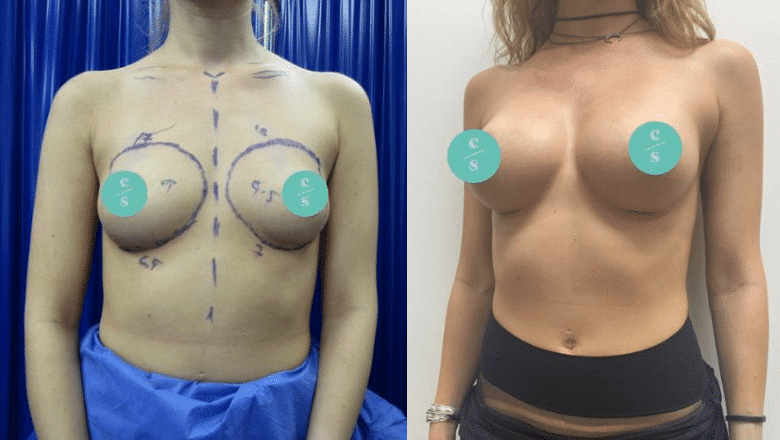
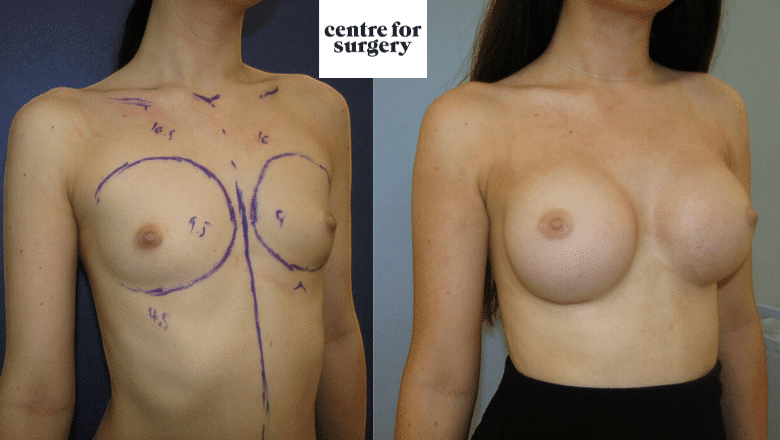



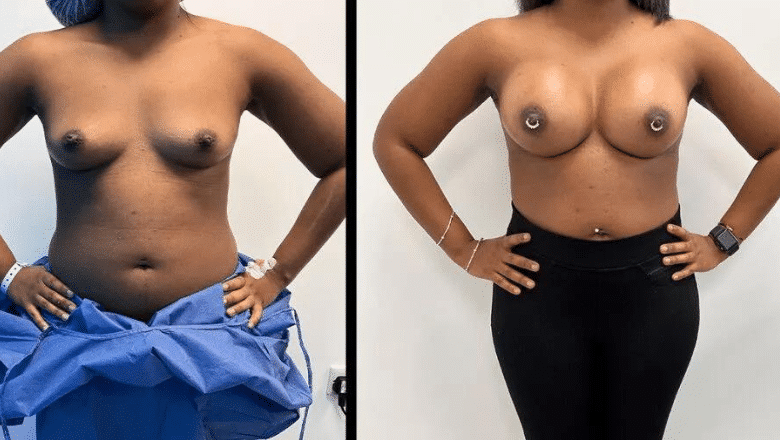
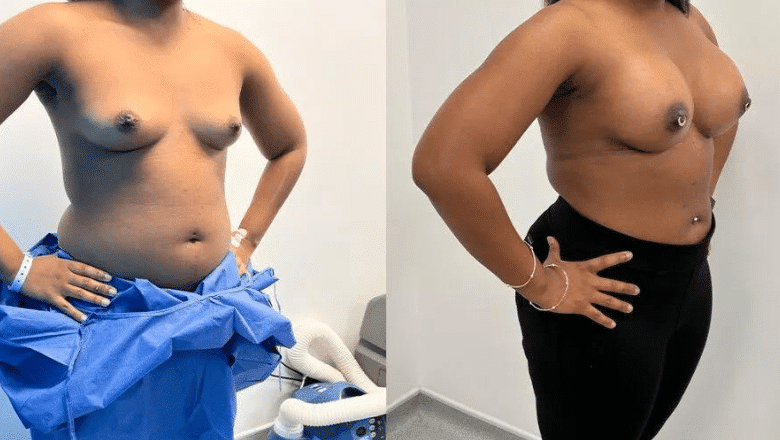
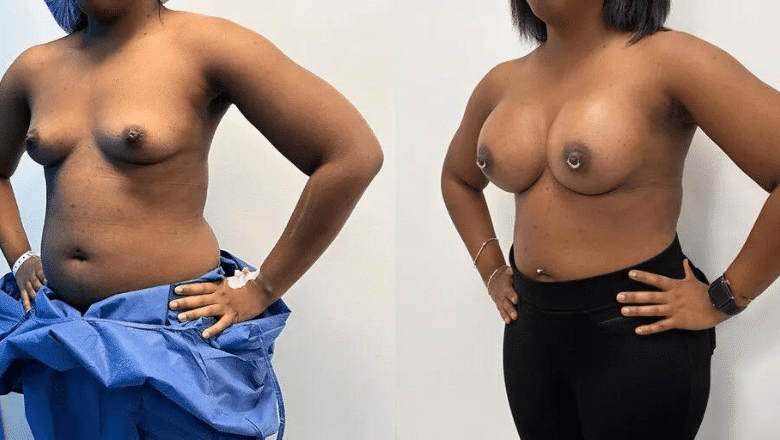
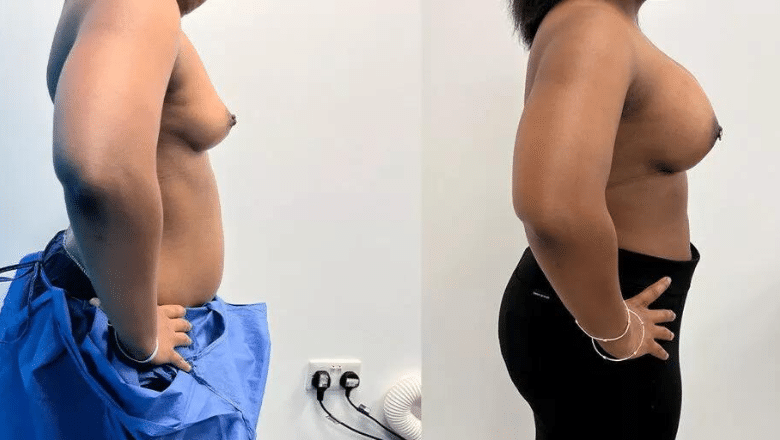
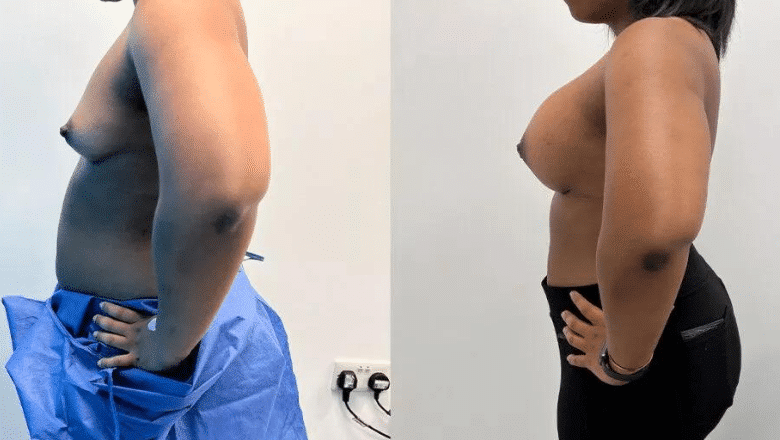
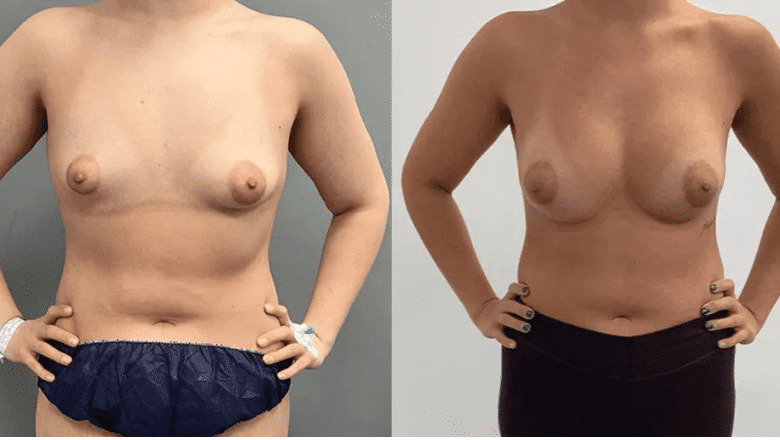
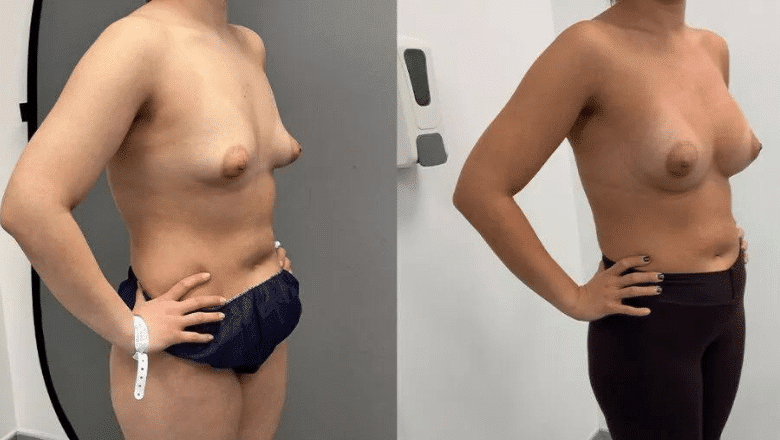

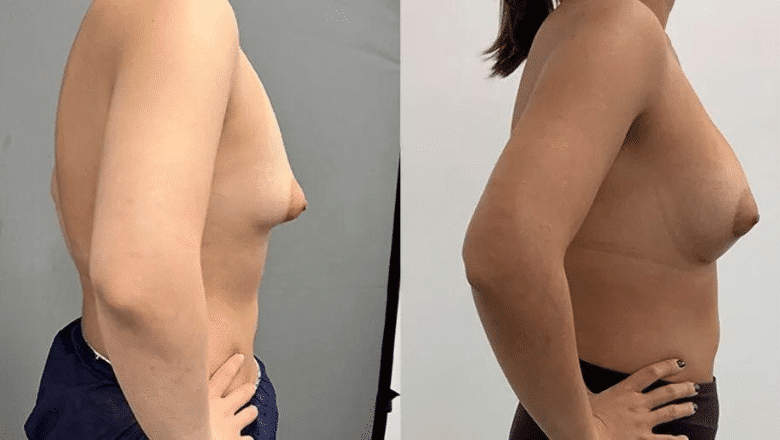
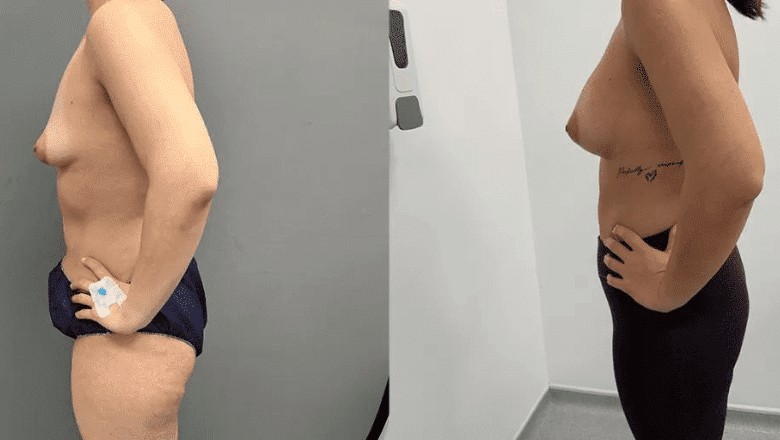
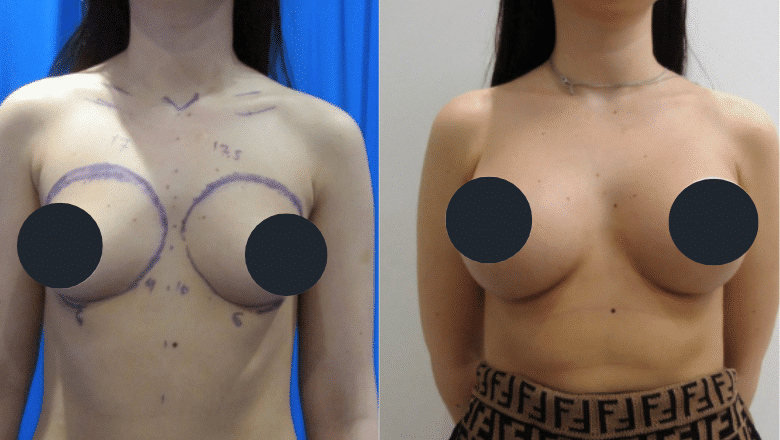




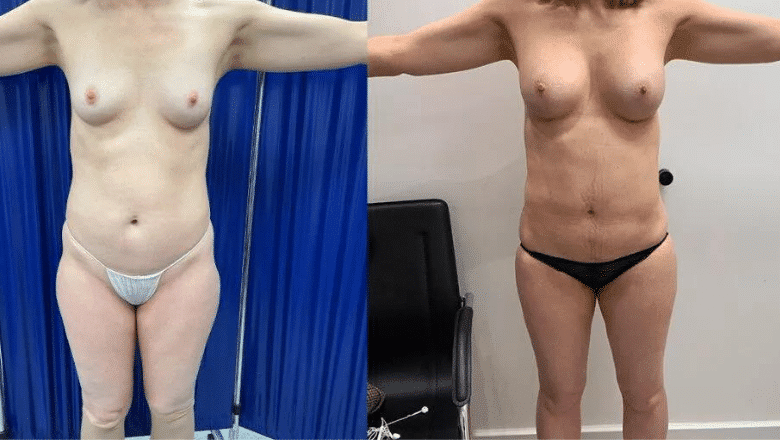
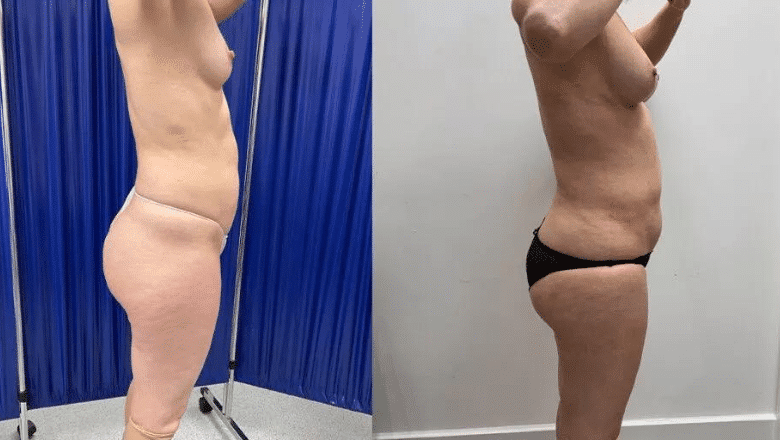


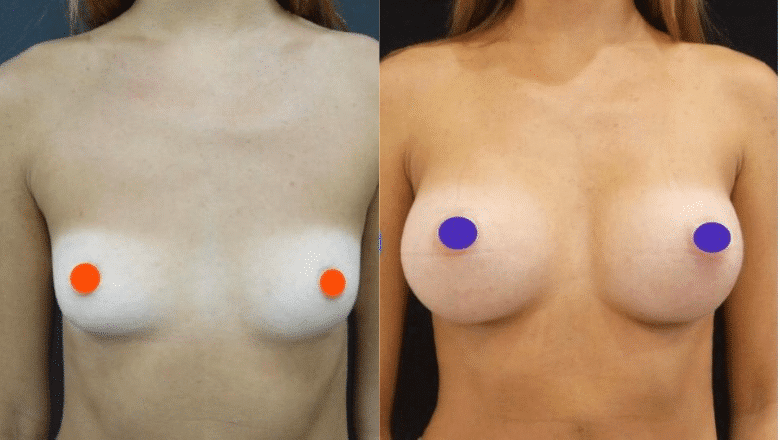

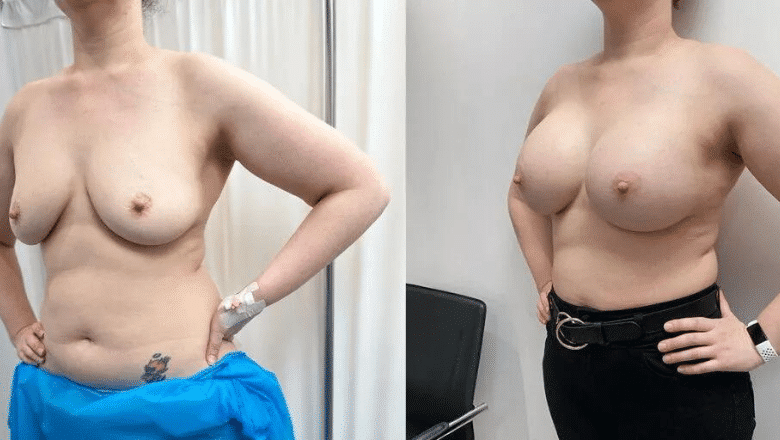
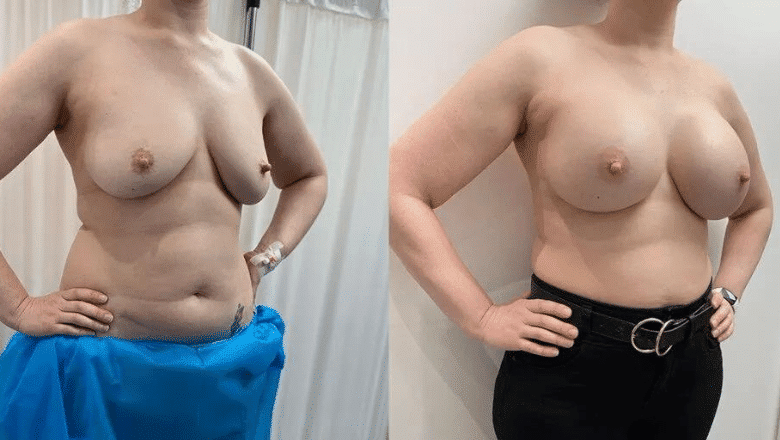
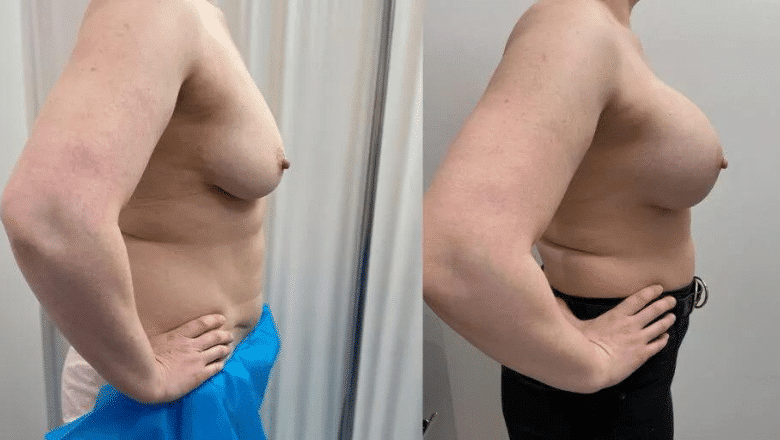
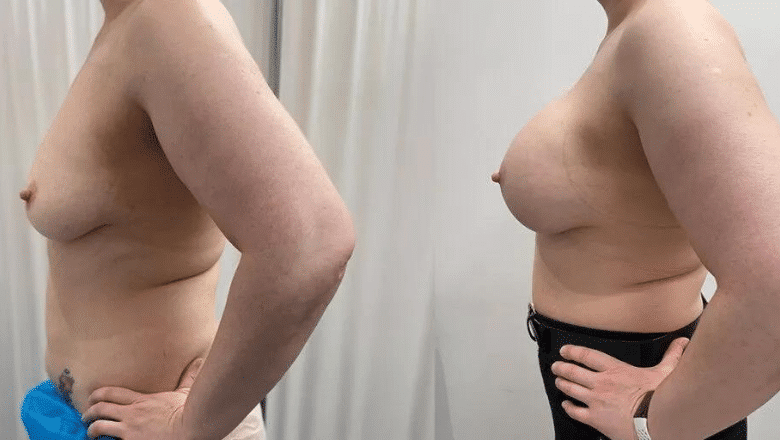
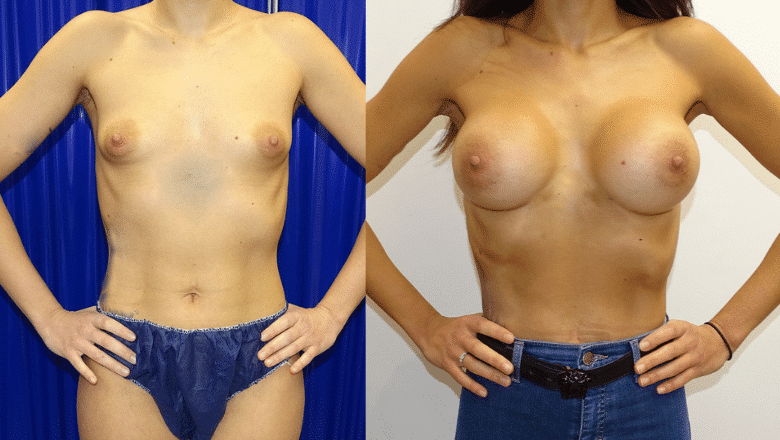
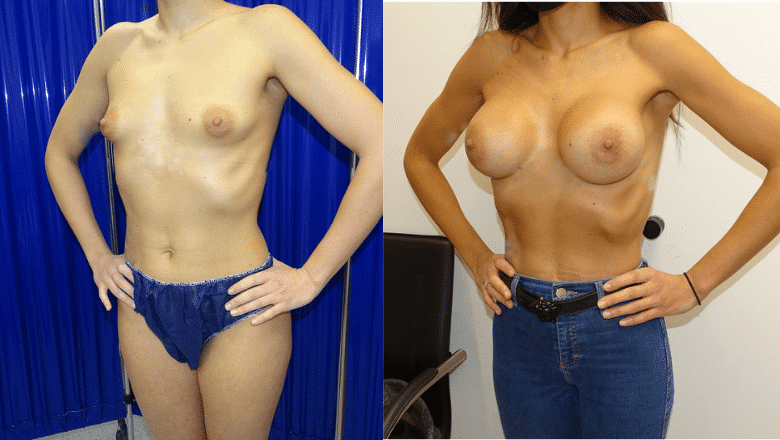

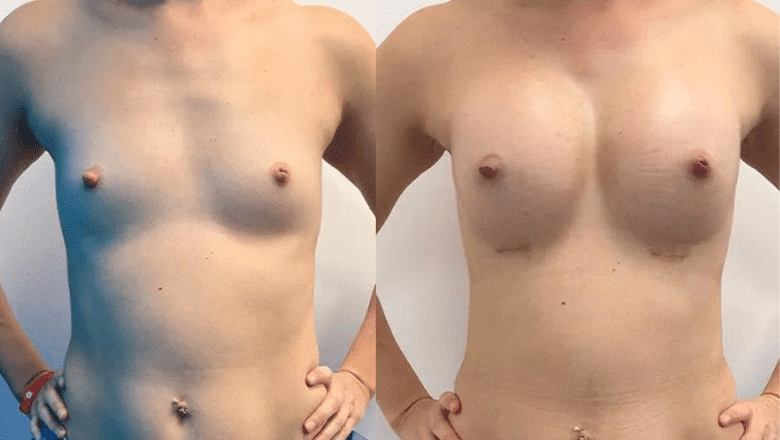
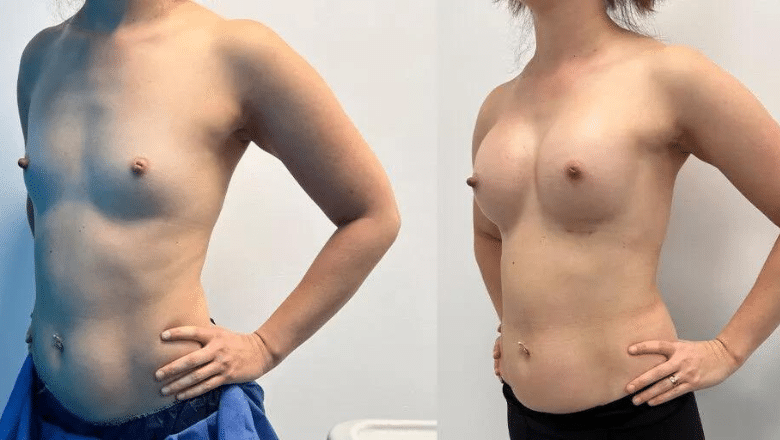
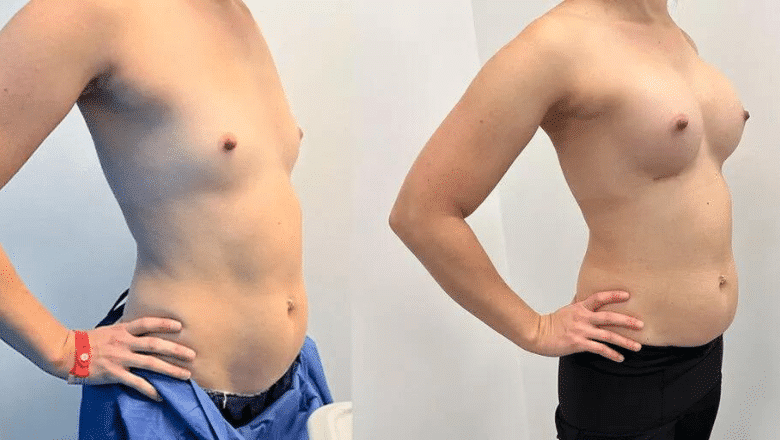

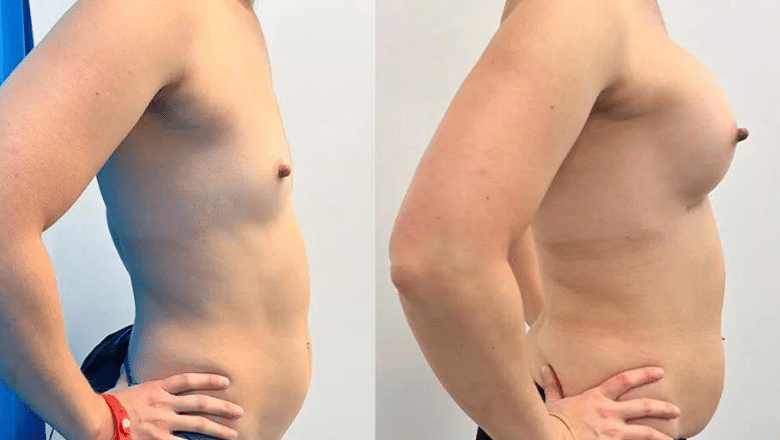
This type of procedure is also referred to as breast implant removal surgery or explantation surgery, followed by the placement of new implants. It can also be called breast implant revision, secondary breast augmentation, implant exchange surgery, or breast implant upsize/downsize, depending on the specific circumstances.
During the procedure, the surgeon may remove the old implants with or without a capsulectomy, which is the removal of the capsule that forms around the implants. While capsule formation around breast implants is a normal physiological response to foreign bodies, in some cases, the capsules can contract and cause breast deformity, a condition known as capsular contracture. In such cases, the surgeon may need to perform a capsulectomy with the breast implant replacement.
At Centre for Surgery, our experienced plastic surgeons are skilled in performing breast implant revision surgeries, including breast implant replacement. Contact us today to schedule a consultation with one of our expert surgeons and learn more about your options for breast implant revision.
How Often Should Breast Implants Be Replaced?
While the enhancement provided by breast implants is designed to be permanent, the reality of implant longevity means that replacement may eventually become necessary to preserve optimal aesthetics and ensure patient safety.
Typical Lifespan of Breast Implants
The lifespan of breast implants can vary, but they are generally expected to last between 10 to 15 years. This timeframe is not fixed, as the durability and longevity of implants can be influenced by several factors, including the type of implant, the surgical technique employed, and the individual’s body response to the implants.
Reasons for Earlier Replacement
While the 10-15-year guideline provides a general timeframe, there are several reasons why you might consider replacing your implants sooner:
Aesthetic Preferences
Over time, your aesthetic preferences may change, leading you to desire a different size, shape, or type of implant to better suit your current taste or lifestyle.
Physical Changes
Natural changes in your body, such as weight fluctuations, pregnancy, or ageing, can affect the appearance of your breasts and may prompt a desire for implant replacement to restore or improve breast aesthetics.
Complications
Although not common, complications such as implant rupture, capsular contracture (scar tissue that forms around the implant), or implant displacement can necessitate earlier replacement to correct these issues and ensure comfort and health.
Monitoring Implant Condition
It’s essential to maintain regular check-ups with your plastic surgeon to monitor the condition of your implants. Advanced imaging techniques, such as MRI scans, are recommended by some health authorities to check for silent ruptures in silicone implants, typically starting around the third year post-surgery and every two years thereafter.
RELATED: Breast Implant Check
Making the Decision to Replace
Deciding to replace breast implants is a personal choice that aesthetic goals, physical health, and changes in lifestyle or personal preferences can influence. It’s essential to consult with a qualified plastic surgeon to discuss your options, whether you’re nearing the end of the typical lifespan of your implants, experiencing complications, or simply wish to change your breast size or shape.
How Do I Know If My Breast Implants Should Be Replaced?
Breast implant replacement is a personal and often necessary decision for many women post-augmentation. Recognising the nuanced signs that suggest it’s time for a replacement is key to ensuring both physical comfort and satisfaction with your breast appearance. Here’s an in-depth exploration of each indicator that might suggest a need for replacing your implants.
Experiencing Unusual Hardness in Your Breasts
Capsular contracture is a condition where the scar tissue that naturally forms around the breast implant begins to tighten. This can cause the breasts to feel unnaturally hard and may lead to discomfort or pain. In some cases, it can also alter the shape or position of the breast implant, leading to aesthetic concerns. Replacing the breast implant can alleviate these symptoms, restoring a softer, more natural feel and appearance to the breasts.
Discovering Lumps Near the Implants
Feeling a lump in or around the breast can be alarming. These lumps could be benign and related to the implant’s valve, especially in certain types of implants with fill valves. In other instances, lumps may form from scar tissue that developed post-surgery. For those with minimal natural breast tissue, the implant itself may be more palpable, mimicking a lump-like sensation. Prompt evaluation by a specialist is essential to determine the cause and appropriate action, which may include implant replacement for resolution.
Implant Ruptures
Implant ruptures are a significant concern, with the risk increasing over time due to factors such as wear and tear or physical trauma.
Saline Implant Rupture
The rupture of a saline implant is quickly noticeable, as the saline solution leaks out, causing the breast to decrease in size and appear deflated. Although the body can safely absorb the saline, the aesthetic change often leads women to seek replacement to restore the original breast volume.
Silicone Implant Rupture
Silicone gel implants present a trickier situation. A rupture may not be immediately obvious due to the gel’s thick consistency. Over time, however, leakage can lead to breast shape changes, discomfort, or capsular contracture. Given the inability of the body to absorb silicone, such ruptures carry a higher risk of complications, making timely replacement crucial.
Correcting Rippling Effects
Rippling or wrinkling effects are more commonly associated with saline implants, particularly when placed over the muscle and in women with thin breast tissue. This can create visible waves or ripples under the skin. Switching to silicone implants or adjusting the placement of the implants can help achieve a smoother, more natural breast surface.
Adjusting for Implants That Have Shifted Over Time
Implant migration or rotation can occur, though it’s relatively rare. This can disrupt the symmetry of the breasts, leading to an uneven appearance. Surgical intervention to replace or reposition the implants can correct this issue, restoring a balanced and harmonious breast appearance.
RELATED: How Can I Tell If My Breast Implant Has Moved?
Updating Implant Size According to Personal Preference
Many women decide to replace their breast implants simply because their aesthetic preferences or body image goals have evolved. Some may seek a larger or smaller size to better align with their current lifestyle or personal taste. This desire for a change in volume is a valid and common reason for pursuing breast implant replacement.
RELATED: How Do I Know When My Breast Implants Need Replacing?
Choosing the Right Breast Implant Replacement: Saline vs. Silicone Gel
Deciding between saline and silicone gel implants for breast replacement involves weighing various factors to determine which option aligns best with your personal preferences, lifestyle, and aesthetic goals. Each type offers distinct advantages and comes with certain considerations.
Saline Implants: Safety and Adjustability
Advantages
Saline implants are known for their safety profile. If these implants rupture, the saline solution inside (which is essentially sterile salt water) is harmlessly absorbed by the body. This feature minimises health risks associated with implant leakage. Another advantage is the adjustability of saline implants; they are filled after insertion, allowing surgeons to adjust the volume during surgery for symmetrical results and to meet patient size preferences precisely.
Considerations
Despite their safety benefits, saline implants are often noted for feeling less natural compared to silicone gel implants. They have a firmer texture and are more susceptible to rippling or wrinkling, especially in women with thinner breast tissue or less natural breast fat. This can affect the smoothness of the breast contour under the skin.
Silicone Gel Implants: Natural Look and Feel
Advantages
Silicone gel implants are widely praised for their ability to mimic breast tissue’s natural look and feel. The silicone gel inside these implants has a consistency similar to human fat, making them a popular choice for those seeking a more natural appearance and texture. Many find that silicone implants offer a more realistic feel, with less chance of rippling, providing a smoother contour under the skin.
Considerations
While silicone implants are favoured for their aesthetic qualities, they do come with considerations. In the event of a rupture, the silicone gel may not be absorbed by the body, potentially complicating detection and necessitating imaging tests like MRI scans to monitor their integrity. Moreover, any leak or rupture requires prompt surgical intervention to remove or replace the implant due to the risk of silicone spreading within the breast tissue.
RELATED: Silicone vs Saline Breast Implants
What are the Benefits of Breast implant Replacement Surgery?
Breast implant replacement surgery offers several benefits that can greatly improve your quality of life, including:
Improved posture and reduced pain
Replacing heavier implants with smaller ones can help improve posture and relieve neck, shoulder, and back pain.
Restored symmetry
In cases of unilateral breast sagging or asymmetry caused by previous surgery, breast implant replacement can help restore symmetry and improve the appearance of your breasts.
Reduced risk of complications
Breast implant replacement can reduce the risk of breast implant illness and cancer associated with textured breast implants.
Natural and aesthetic results
Breast implant replacement surgery can help provide natural and aesthetic results that are tailored to your individual needs.
Increased self-confidence
With improved breast appearance and reduced pain, many patients report increased self-confidence and overall satisfaction with their appearance.
When is a Capsulectomy Needed?
Capsulectomy is a surgical procedure that removes the fibrous capsule that forms around breast implants. Although not performed with every implant replacement surgery, it is sometimes necessary for certain situations. Plastic surgeons typically avoid removing the capsule unless it is absolutely necessary, as it is more invasive and can increase the risk of surgical complications.
You may need capsulectomy if you have capsular contracture, which is the most common complication of breast implants. This condition causes the fibrous capsule to harden around the implants, resulting in deformity and pain. Capsulectomy is necessary for severe capsular contractures, which happen in 8% to 19% of breast augmentations and are classified as Baker grades III or IV.
Another situation in which capsulectomy is necessary is when there is Breast Implant-Associated Lymphoma (BIA-ALCL). This is a rare type of immune cancer associated with certain types of breast implants. The treatment of BIA-ALCL includes “en bloc capsulectomy,” which means removing the implant and capsule in one piece. However, en bloc removal is riskier and could lead to a punctured lung.
In some cases, capsulectomy may also be considered for breast implant illness (BII), a group of non-specific symptoms thought to be related to breast implants. While the role of capsulectomy in treating BII is still debated, many women find improvement with at least partial capsulectomy.
Your surgeon will determine whether or not you need a capsulectomy when having your breast implants exchanged. He or she will explain the risks and benefits of capsule removal before you make a decision.
Disadvantages of Capsulectomy
It is important to consider the potential disadvantages of capsulectomy when deciding whether or not to undergo the procedure. While capsulectomy may be necessary in certain cases, such as severe capsular contracture, it can carry some extra risks compared to surgery without capsulectomy.
One potential disadvantage of capsulectomy is the increased surgical time. On average, capsulectomy can add an extra hour to the surgery time. This can lead to increased costs and longer recovery times.
Another potential disadvantage is the increased surgical risks associated with capsulectomy. For example, there is a higher risk of pneumothorax, which is the accumulation of air in the space between the lungs and the chest wall. Additionally, there is a higher risk of nerve and blood vessel damage, especially when removing the axillary part of a capsule.
During recovery, capsulectomy can be more painful than implant removal without capsulectomy. This is due to the more invasive nature of the procedure. It is important to discuss pain management options with your surgeon before undergoing the procedure.
Ideal Candidates for Breast Implant Replacement
To be suitable for breast implant replacement, you will need to be experiencing capsular contracture or be unhappy with the size or shape of your current implants. Those who wish to have smaller, natural breasts may opt for implant removal instead of replacement. In the case of implant removal, you may also need to undergo a breast uplift to avoid having any sagging skin or drooping breasts.
RELATED: Why would I need implant exchange surgery?
While breast implants generally need replacing after 10 to 15 years, if you are not experiencing any medical issues, it may not be necessary to undergo a breast implant replacement.
Those who undergo breast implant replacement will also need to be:
- 18 years or older
- Physically and mentally healthy
- Have reasonable expectations about what the procedure can achieve
Before surgery, you will have a consultation with one of our expert surgeons, where you will be able to discuss your reasoning for implant replacement and the size, shape and placement of your new implants. The surgeon may also discuss the risks of going abroad for this procedure.
How To Prepare For Breast Implant Replacement
Preparing for breast implant replacement surgery is crucial for ensuring a smooth procedure and recovery. By taking proactive steps in the weeks leading up to your surgery, you can significantly reduce the risk of complications and set the stage for a successful outcome. Here’s a detailed guide on how to prepare for your upcoming surgery:
Achieving and Maintaining a Healthy Weight
Why It’s Important
Stabilising your weight and ensuring a healthy Body Mass Index (BMI) is fundamental. Fluctuations in weight can affect the surgery outcomes and may increase the risk of complications during and after the procedure. A stable weight helps in achieving the best possible aesthetic results and enhances the healing process.
Pausing Certain Medications and Supplements
Oestrogen Contraceptives/Hormone Replacement Therapy (HRT)
It’s advised to stop taking estrogen-based contraceptives or HRT about four weeks before your surgery. These medications can elevate the risk of developing blood clots, which is a concern during any surgical procedure.
Other Medications and Supplements
Consult with your surgeon about all medications, vitamins, and supplements you’re currently taking. Some of these might need to be paused or adjusted to avoid bleeding risks or interactions with anaesthesia.
Quitting Smoking and Limiting Alcohol Intake
Smoking Cessation
Nicotine can severely impede the healing process by restricting blood flow. Quitting smoking at least four weeks before and after your surgery is critical to ensure optimal healing and reduce the risk of complications such as infections or poor wound healing.
Alcohol Consumption
It’s advisable to reduce alcohol intake and avoid binge drinking in the two weeks leading up to your surgery. Alcohol can increase bleeding risk and interfere with the body’s natural healing processes.
Home Preparation for Recovery
Creating a Comfortable Recovery Space
Ensure your home is ready for your return after surgery. Set up a comfortable rest area with easy access to everything you might need, such as water, medications, and entertainment options.
Arranging Assistance
Having someone available to help you with daily tasks, especially in the first few days after surgery, is invaluable. Whether it’s assistance with personal care, meal preparation, or managing household duties, ensure you have the support you need.
Child and Pet Care
If you have young children or pets, arranging for additional help to care for them during your recovery period will allow you to focus on your healing without unnecessary strain or stress.
Stocking Up on Essentials
Prepare by stocking up on easy-to-prepare meals, hydration options, and any medical supplies recommended by your surgeon, such as gauze, over-the-counter pain relievers, and ice packs for managing swelling.
Breast Implant Replacement Surgery Overview
Breast implant replacement surgery takes place under a general anaesthetic – Centre for Surgery use TIVA anaesthesia. You will be asleep throughout the procedure to ensure your comfort. The procedure is performed as an outpatient, which means you will be able to go home later the same day and recover in the comfort of your own home.
Implant Replacement without Capsulectomy
Breast implant replacement without capsulectomy is a commonly performed procedure. This is because removing the capsule can increase the risks associated with the surgery. In most cases, a new implant is simply placed within the existing capsule, which acts as a pocket to hold the implant. This technique is less invasive and is associated with lower rates of complications. During the procedure, an incision is made in the inframammary fold, and the surgeon removes the old implant. The new implant is then inserted into the existing capsule, and the incision is closed. Unless there is a specific reason to remove the capsule, such as BIA-ALCL or severe contractures, it is typically left in place. Your surgeon will advise you on whether or not you require capsulectomy during your implant replacement surgery based on your individual circumstances.
Implant Replacement with Partial or Total Capsulectomy
Capsulectomy is not always necessary for implant replacement surgery. In fact, the plastic surgery community generally agrees that it should only be done when it’s necessary. Capsular contracture is one clear indication of partially or fully removing the capsule. However, sometimes surgeons may also remove parts of the capsule that appear to be too hard or have too many calcium deposits, even without capsular contracture.
RELATED: En Bloc vs Partial Capsulectomy for Breast Implant Removal
The rationale behind removing these calcium deposits is that they can interfere with future mammograms and lead to more biopsies and the consequent surgical risks. Additionally, they may harden over time and cause lump formation. While there is minimal evidence to suggest that removing the capsule might also reduce the risk of BIA-ALCL in the future, this claim is still being debated.
If partial or full capsulectomy is deemed necessary, it is typically done directly after removing the implants. The surgeon will cut out the capsule in pieces, strip it off the ribs and chest muscles, and remove any fibrotic tissue as well as some of the surrounding normal breast tissue. After the capsule is removed, a new surgical pocket is created, and new implants are introduced. Partial capsulectomy refers to the removal of only parts of a calcified capsule, while a full capsulectomy involves removing the entire capsule, which is typically done in cases of severe capsular contracture.
Implant Replacement with En Bloc Capsulectomy
En bloc capsulectomy is a highly specialised surgical technique that is reserved for specific cases, such as breast implant-associated cancer (BIA-ALCL). During this procedure, the surgeon removes the implant and the capsule as a single unit, which can be more invasive and carry additional risks compared to other implant removal methods.
En bloc capsulectomy involves cutting out more tissue, which may include the chest and intercostal muscles on the ribs. This can lead to a higher risk of complications such as lung puncture and pneumothorax, which is when air leaks into the chest cavity.
Due to its technical complexity and associated risks, en bloc breast implant removal is only recommended in certain cases where it is deemed necessary to protect the patient’s health and well-being.
Recovery after Breast Implant Replacement
Breast implant replacement is a common surgical procedure that is often performed on an outpatient basis, meaning you can go home on the same day as the surgery. The procedure typically takes about an hour to complete and involves the removal of old breast implants and the insertion of new ones. After the surgery, you will have gauze dressing and bandages applied to the incision site to protect it from infection and promote healing.
To drain any excess blood or fluid that may accumulate over time, your surgeon will place drains under your skin. You may experience some pain and discomfort after the procedure, but this can be managed with pain medication and by wearing a compression garment or bra for at least two to four weeks. The compression garment will help accelerate the healing process and reduce swelling associated with the surgery.
The recovery time after breast implant replacement surgery varies depending on your overall health and natural healing ability. It is generally recommended that you take at least one to two weeks off work to rest and allow your body to heal. During this time, you should avoid smoking and strenuous exercise, as these activities can hinder your recovery and affect the outcome of the procedure.
In the first week following the surgery, it is important to keep your upper body elevated by approximately 30 degrees when sitting or sleeping. This position promotes wound healing and reduces swelling. It is also recommended that you sleep on your back to prevent the implant from shifting. Over time, you should gradually notice an improvement in the appearance of your breasts, and the final results of the procedure will continue to improve.
Results You Can Expect From Breast Implant Replacement
Undergoing breast implant replacement surgery marks a significant step towards achieving your desired breast aesthetics. The journey to appreciating the full potential of your surgical outcomes encompasses immediate visibility of changes, followed by a period of patience as your body heals and adjusts to these modifications.
Initial Changes and Immediate Visibility
Right after the procedure, you will notice changes in the size and shape of your breasts. These initial alterations are the first glimpse of what your final results will look like. However, it’s important to understand that these are not the final outcomes. At this stage, the appearance of your breasts is influenced by post-surgical swelling and the implants’ initial positioning.
The Healing Process: Swelling and Settling
The body’s natural response to surgery involves swelling, which can obscure the true shape and contour of your newly enhanced bust. Additionally, the implants themselves undergo a settling process, known as ‘dropping,’ into a more natural position within the breast tissue. This phase is crucial as it allows the implants to align more harmoniously with your body’s natural contours.
Timeline for Final Results
Typically, the swelling starts to significantly reduce within a few weeks post-surgery, with most of it subsiding after about a month. However, allowing your body the time to fully adjust and the implants to settle into their permanent position can take several months. This timeline can vary from person to person, depending on individual healing rates, the type of implants used, and the specific techniques employed during your surgery.
Enjoying Your Enhanced Bust
After the swelling has decreased and the implants have settled, you will be able to appreciate the adjustments made to your bust fully. The final outcomes should reveal a more aesthetically pleasing and proportional breast size and shape, aligning with your pre-surgical expectations and discussions with your surgeon. It’s this stage that patients often find the most rewarding, as the physical transformations align with their desired aesthetic goals, boosting confidence and satisfaction with their body image.
Risks and Potential Complications of Breast Implant Replacement
With all surgical procedures, there is always an element of risk and breast implant replacement is no different. Centre for Surgery has some of the best plastic surgeons specialising in aesthetic breast surgery to optimise results and minimise risk. Following the postoperative instructions to ensure optimal healing is always highly recommended.
It is common to experience the following side effects:
- bruising and swelling
- temporary numbness
- a small amount of scarring
Potential complications of breast implant replacement
- Anaesthetic risks
- Bleeding
- Surgical site infection – Reducing the risk of surgical site infection
- Delayed wound healing
- Hyperpigmented skin
- Collections of fluid under the skin
- Tingling or numbness of the area around the incision
- Breast asymmetry
- Capsular contracture
- Implant malposition
- Hypertrophic or keloid scar
- Requirement for revision surgery
Breast Implant Replacement Cost London - How much is implant replacement in London UK? Prices & Fees
When it comes to removing or replacing breast implants, the cost can vary greatly depending on several factors. The type of surgery you undergo, such as en bloc removal, partial capsulectomy, or no capsulectomy, can affect the cost. Additionally, the cost of new implants, fees for the anaesthetist, surgeon, and hospital theatre will also play a role in determining the overall cost.
If you’re considering having your breast implants removed or replaced, it’s important to reach out to the surgical team to get an estimate of the cost. Centre for Surgery offers consultations where you can discuss your options with the surgeon and get a personalised quote. Don’t hesitate to ask any questions you may have about the cost or financing options. The surgical team is there to help you make an informed decision about your breast implant removal or replacement journey.
Always remember that price should never be the determining factor when choosing your provider. We feel that safety and quality of service should be your number one priority, and we instill in you the confidence that our team will look after you before, during, and after your procedure to the best of their ability.
Spread the cost of your breast implant exchange procedure
Centre for Surgery is fully approved to offer implant exchange finance via our specialist finance partner, Chrysalis Finance. You no longer need to use your savings to pay for your treatment – you can apply to spread the cost of your procedure with Chrysalis Finance using their simple 1,2,3 application to pay for your procedure. Don’t wait until you have enough money for your treatment. Apply today and (subject to status) pay for your procedure easily in monthly instalments using one of their payment options. Chrysalis Finance is the only ethical provider that focuses solely on the provision of specialist financing for medical procedures.
Options for Breast Implant Replacement Surgery
There are different types of breast implant replacement surgeries available, and your surgeon can help you determine the best option for your individual needs.
The first option for breast implant replacement surgery is to have your previous implant swapped with a new one. The new implant can be of your desired shape, size, and type of filler material. This is a straightforward procedure that involves removing the old implant and replacing it with a new one, with the goal of improving the overall appearance of your breasts.
Fat Transfer Breast Augmentation
Another option is fat transfer breast augmentation. This technique involves removing unwanted fat from different parts of your body through liposuction and inserting it into your breasts to improve their shape and size. Fat transfer breast augmentation is an excellent option for women who want to avoid the use of synthetic implants and have enough excess fat in other areas of their body to transfer to their breasts.
Hybrid Breast Augmentation
Hybrid breast augmentation is a combination of both the implant and fat transfer techniques. This technique can give your breasts a more enhanced appearance by using a combination of synthetic implants and natural fat. Hybrid breast augmentation is an excellent option for women who want to achieve a more natural look while still having the benefits of having implants.
Complementary Procedures for Breast Implant Replacement
When considering breast implant replacement, integrating additional cosmetic enhancements can significantly elevate the overall aesthetic outcome. These supplementary procedures not only address the breasts but also refine and sculpt other areas of the body for a more comprehensive transformation.
Mastopexy
Mastopexy, or a breast lift, is frequently performed alongside breast implant replacement to address sagging breasts. This process involves the removal of surplus skin and the recontouring of the breast tissue. By doing so, it ensures the breast contours are beautifully reshaped to harmonise with the new implants, eliminating any excess skin that might obscure the enhanced silhouette.
Liposuction
Liposuction offers a way to precisely remove fat from selected areas, sculpting the body to its ideal contours. When paired with breast implant replacement, this technique can be particularly effective in refining the chest area, removing undesirable fat to accentuate the chest’s definition. Beyond the chest, liposuction can be applied to various parts of the upper body, such as the arms and back, to slim and enhance overall body contours, contributing to a more sculpted and defined appearance.
Abdominoplasty
Abdominoplasty, commonly known as a tummy tuck, is aimed at creating a flatter and more defined midsection. This procedure involves the removal of excess abdominal skin and the restoration of separated muscles, leading to a more toned and contoured abdomen. When combined with breast implant replacement, a tummy tuck can be a key component of a ‘mummy makeover‘, synergising with the breast enhancement to rejuvenate the upper body. This dual approach not only accentuates the breast curves but also tones the abdomen, facilitating a comprehensive upper body renewal.
Why Choose Centre for Surgery for Breast Implant Replacement?
When you choose Centre for Surgery for your breast implant removal or replacement surgery, your treatment package includes a range of services to ensure the best possible outcomes and optimal patient satisfaction.
Our treatment packages include as many preoperative consultations with your surgeon as needed to ensure the procedure is right for you. We provide treatment at a specialist day surgery facility, which has recently been rated “Good” by the Care Quality Commission (CQC), ensuring the highest standards of care throughout your procedure.
In addition, we offer enhanced same-day discharge with the added benefit of recovering in your own home. Our patients receive 24/7 clinical support from their surgeon for the first 48 hours and our expert postoperative support team. You will also have your very own dedicated patient coordinator who will guide you through every step of the process.
We provide an in-depth preoperative medical assessment to ensure you are fully fit for your procedure. This ensures that any underlying medical conditions or potential risks are identified and addressed before your surgery.
Following your procedure, the CQC describes our exceptionally high standards of postoperative care as “outstanding.” We provide regular telephone and face-to-face checks to ensure that your recovery is going smoothly and that any issues are promptly addressed.
At Centre for Surgery, we are committed to providing our patients with the highest quality care and support throughout their breast implant removal or replacement journey. Contact us today to learn more about our treatment packages and schedule a consultation with one of our experienced plastic surgeons.
FAQs
-
How Can I Ensure My Breast Implants Last as Long as Possible?To maximise the longevity of your breast implants, it’s crucial to spend ample time considering the most suitable size and shape before your surgery. This thoughtfulness helps in ensuring the implants meet your long-term aesthetic goals, potentially reducing the desire for premature replacement due to cosmetic dissatisfaction. Additionally, the selection of a highly skilled and experienced surgeon plays a vital role in minimising the risk of complications, which could necessitate a revision procedure sooner than anticipated.
Postoperative care is equally important. Adhering strictly to the recovery guidelines provided by your surgeon will support a smooth healing process and mitigate the risk of issues that could shorten the lifespan of your implants. -
What Measures Can I Take to Prevent My Breast Implants from Rupturing?While it’s impossible to guarantee that breast implants will never rupture, you can significantly reduce the risk by avoiding activities known for their potential to cause chest trauma. This includes high-contact sports and other rigorous activities that might lead to a direct impact on your breasts. Choosing appropriate protective gear when engaging in sports and being mindful of your chest area’s exposure to potential harm can also play a crucial role in safeguarding your implants.
-
Do I need a breast implant replacement?Many people feel the need to undergo a breast implant replacement 10 to 15 years after having their original breast augmentation. This can be for numerous reasons, including a change in body shape, wanting to change implant size, or experiencing capsular contracture.
Those who wish to decrease the size of the implants and want to have a more natural look may wish to have the implants removed and not replaced.
If you do not wish to alter the appearance of your breasts and are not experiencing any medical conditions, you may not need to replace the implants. -
What happens if you don't replace breast implants?Breast implants are not designed to last forever, and over time they may need to be replaced or removed due to a variety of factors, such as changes in breast size or shape, implant rupture or leakage, or complications such as capsular contracture.
If you choose not to replace your breast implants, you may experience a variety of changes in your breast appearance and overall health. Some possible consequences of not replacing breast implants include:
Changes in breast shape and size: Over time, breast implants can shift or become distorted, leading to changes in breast shape and size. This can result in a less natural-looking breast appearance or asymmetry between the breasts.
Implant rupture or leakage: Breast implants can rupture or leak over time, which can cause pain, discomfort, and changes in breast appearance. Ruptured implants may need to be removed or replaced to avoid complications.
Capsular contracture: This is a complication that can occur when the scar tissue around the implant tightens and compresses the implant. This can cause the breast to become hard, painful, and misshapen and may require surgical intervention to correct.
Infection or other complications: Breast implants can increase the risk of certain complications, such as infection, bleeding, or implant displacement. These complications may require the removal or replacement of the implants. -
When should I redo my breast implants?In general, breast implants may need to be replaced every 10 to 15 years or as needed due to complications or other issues. However, this is not a hard and fast rule, and some patients may need to replace their implants sooner or later than this time frame.
Some signs that may indicate that it's time to replace your breast implants include:
Changes in breast appearance: Over time, breast implants may shift or become distorted, leading to changes in breast shape and size. If you notice significant changes in the appearance of your breasts, it may be time to consider replacing your implants.
Rupture or leakage: Breast implants can rupture or leak over time, which can cause pain, discomfort, and changes in breast appearance. If you suspect that your implant has ruptured or leaked, you should consult with your surgeon to determine the best course of action.
Capsular contracture: This is a complication that can occur when the scar tissue around the implant tightens and compresses the implant. This can cause the breast to become hard, painful, and misshapen, and may require surgical intervention to correct.
Pain or discomfort: If you experience persistent pain or discomfort in the breast area, it may be a sign that your breast implant needs to be replaced. -
Can I change the size of my implants?Many women will undergo breast implant replacement in order to change the size of the implants.
If you choose to increase the size, more pocket space will need to be made available, and the skin and tissue will be more stretched, which may impact the recovery time.
If you choose to decrease the size, you may also wish to undergo a breast lift. This will lift the position of the breasts and avoid any sagging skin occurring. -
What does breast implant replacement involve?Breast implant exchange is similar to a primary breast augmentation surgery. Your existing scars from your first breast augmentation will be used for the incision position, so you will have no new scars. Your implant must be placed in front of or behind the muscle. Generally, your implant will be placed back into the pocket previously made for it. However, if you have issues such as capsular contracture or you can feel the edges of the implant, a new pocket may be made.
You will be able to increase or decrease the size of the implants. If you want to increase, the maximum size will depend on how much tissue and skin is available. If you choose implants which are too large, the edges of the implant may be visible after surgery. If you decide to decrease the size, this may result in loose or saggy skin, and it may be recommended that you undergo a mastopexy to lift the position of the breasts. This will ensure you have firm, youthful-looking breasts without any sagging skin. If you undergo a mastopexy, you will have additional incisions and as a result, new scars. -
How long is surgery for breast implant replacement?The length of surgery for breast implant replacement can vary depending on several factors, including the procedure's complexity and the surgeon's experience. Generally, the surgery takes about 1 to 3 hours to complete.
The old breast implants are removed and replaced with new ones during the surgery. If there is any scar tissue or other complications from the previous surgery, it may take longer to remove the old implants.
After the old implants are removed, the surgeon will prepare the breast pocket for the new implants. This may involve adjusting the size of the pocket or using a different placement technique to achieve the desired result. Once the new implants are in place, the incisions will be closed with sutures or surgical glue. -
Will the implants have the same placement?An implant will either be placed above or below the muscle. In most cases, the implant will be placed in the same pocket as previously. However, if you experienced any capsular contracture, or you wish to have a different look with the implants, you may wish to alter the placement of the implant. This means a new pocket will have to be created by the surgeon before the implant is placed.
-
What are the expected results of breast implant replacement?Ability to increase or decrease the size of your breasts depending on your preferences
Better placement of breast implants with a more natural appearance
Addressing breast changes that occur with pregnancy and weight loss or gain.
An increase in confidence and subsequent improvement in quality of life
Capsular contracture can often be a reason for wanting implant replacement. This is where the internal scarring forms around the implant. This is a normal response from the body to a foreign object (the implant). Generally, the scarring will help to keep the implant in place. For more people, this will occur, and they will be unaware of it happening. However, in some instances, capsular contracture will occur when the scarring puts pressure on the implant. This can cause the implant to appear misshapen or can even cause physical pain or discomfort.
Others may not experience capsular contracture but want to change the appearance of their implants. Naturally, ageing, as well as pregnancy, can alter how the breasts and the body appear. This may mean that the implants no longer suit. Replacing your implants will allow you to choose a new shape and size to help achieve your desired look. -
Will I have scars after replacing implants?In most cases, the surgeon will make the incision in the same position as your previous surgery. This means you will have no new scars.
However, if you also opt to have a breast lift, you will have new scars. This scar is known as a ‘lollipop scar’, with the scar going around the edge of the areola and vertically down to the crease of the breast. This scar will fade with time, however, it will remain visible. -
Is replacing implants painful?The level of pain experienced during breast implant replacement surgery can vary from person to person. However, most patients report experiencing some degree of pain and discomfort after the surgery.
During the procedure, you will be given anaesthesia to ensure that you are comfortable and pain-free. After the surgery, you can expect to experience some soreness, swelling, and discomfort around the incision sites. Your surgeon may prescribe pain medication to help manage your discomfort during the recovery period.
Follow your surgeon's post-operative instructions carefully to help manage pain and promote healing. This may include taking prescribed pain medication, applying ice packs to the affected area, and avoiding certain activities that could cause strain or pressure on the chest.
While some pain and discomfort are common after breast implant replacement surgery, it typically subsides within a few days to a week. If you experience severe pain, excessive swelling, or other concerning symptoms, contact your surgeon right away. -
Does it hurt to replace breast implants?It is normal to experience some discomfort after breast implant replacement surgery, but the level of pain varies from person to person. The degree of pain can also depend on the type of surgery you have and your individual pain tolerance. Some women report feeling only mild discomfort or soreness, while others may experience more significant pain.
During the breast implant replacement procedure, your surgeon will make incisions in your breast tissue to remove the old implant and insert the new one. This can cause some discomfort after the surgery, and you may experience some swelling and tenderness in the affected area. However, your surgeon will provide you with pain medication to manage the pain and make you more comfortable during the recovery process. -
What is capsular contracture ?Breast implants are made of silicone and are classified as a foreign material. Foreign materials do not occur naturally in the human body. Foreign objects such as breast implants when inserted into the human body lead to the formation of a tissue capsule that is fibrous in nature. This occurs with any type of implant, not just breast implants and is a normal phenomenon.
Different people will have a slightly different manner in how this fibrous tissue capsule forms. Some people are more prone to developing thicker scar tissue and in this case the surrounding tissue capsule around the implant will be harder in consistency. With muscular contraction of the pectoralis muscle, this dense fibrous capsule can contract around the implant. This process is referred to as capsular contracture and can cause the breast implant appear deformed with more severe degrees of capsular contracture. Often in more marked cases of capsular contracture, the patient may experience discomfort.
Breast implant removal is often performed alongside surgery for the capsular contracture. The two surgical options for capsules are capsulotomy which is quick and straightforward to perform and a more involved procedure called a capsulectomy which involves removal of the entire capsule. -
Will recovery be the same as my first breast augmentation?The recovery period for breast implant exchange will be considerably easier and shorter than that experienced after your initial breast augmentation. This is because the skin and tissue have already been stretched and the pocket for the implant has already been made.
If you have larger implants inserted, or you change the placement of the implant, you may experience a longer recovery period. -
When Is It Typically Safe to Resume Work After Undergoing Breast Implant Replacement?The timeline for returning to work post-breast implant replacement varies among individuals, but many patients find themselves able to resume their professional activities within 1 to 2 weeks following the procedure. This period can differ based on the nature of your job, especially if your role involves physical exertion or activities that might strain your recovery. Consulting with your surgeon about your specific job duties will help in formulating a tailored return-to-work plan that ensures your wellbeing.
-
Is Wearing a Compression Garment Necessary After Breast Implant Replacement?Yes, wearing a compression garment is typically required for the first six weeks following breast implant replacement surgery. This garment aids in managing post-surgical swelling, supports the healing tissues, and helps the skin adapt to the new breast contours. By wearing the compression garment as instructed, you can enhance your comfort during recovery and contribute to achieving optimal surgical outcomes.
-
Can breast implants be difficult to remove or replace ?Breast implant exchange is generally a routine surgical procedure by an expert breast surgeon. The vast majority of smooth or textured implants are easily removed, and this can even be done under a local anaesthetic in selected cases where a capsulectomy is not required. More tricky to remove are PolyTech polyurethane implants from Germany with a soft and foam-like outer shell.
Breast implant exchange takes about 90 to 120 minutes to perform. -
Are Breast Implant Replacements Considered Permanent?While breast implant replacements are designed to last many years, they are not usually considered lifetime solutions. Over time, you may wish to replace your implants due to personal preferences regarding size or shape changes, or in response to complications such as implant rupture or capsular contracture. Regular check-ups with your surgeon can help monitor the condition of your implants and advise on the best timing for any potential replacement.
-
How many times can you replace a breast implant?Breast implants are not designed to last forever, and over time they may need to be replaced or removed due to a variety of factors, such as changes in breast size or shape, implant rupture or leakage, or complications such as capsular contracture.
The frequency with which breast implants need to be replaced can vary greatly depending on the individual patient and the type of implants used. Generally, breast implants may need to be replaced every 10 to 15 years or as needed due to complications or other issues.
There is no set limit to the number of times breast implants can be replaced as long as the patient is in good health and there is enough breast tissue to support the new implant. However, repeated surgeries can increase the risk of complications such as infection, bleeding, and scarring.
Do discuss your individual circumstances with your plastic surgeon to determine the best course of action for your breast implants. Your surgeon can provide you with personalised recommendations based on your medical history, current health, and aesthetic goals. -
What are PIP implants and why do they need to be removed or replaced?PIP breast implants were manufactured by a French company and were made using a non-compliant type of industrial silicone instead of medical-grade silicone. There were clear dangers to health of using such an implant. PIP implants had a much higher rate of implant rupture than approved medical-grade breast implants.
Large commercial cosmetic surgery groups heavily used PIP implants as they were very cheap to purchase. There are approximately 50000 women who had these implants in the UK.
Sadly once the fraudulent nature of the implants was discovered by regulators, many women very understandably wanted them removed or replaced. There has, however, been no proven link to serious health conditions as a result of having PIP implants. Centre for Surgery are well known for its expertise in breast implant removal and/or replacement and has treated many hundreds of women affected by PIP implants. We have never used PIP implants and continue using only the highest quality approved medical-grade silicone breast implants. We still see women who have had PIP implants and wish to remove them. -
When can I start exercising after implant exchange?You will find you will be able to complete light activities within a few days of surgery. However, you will need to avoid vigorous physical activity for four to six weeks after surgery.
-
Will breast implant replacement affect my nipple size?Breast implant replacement itself does not directly alter the size of your nipples. However, the introduction of larger implants might stretch the surrounding skin, including the areolas, potentially making them appear larger. For individuals concerned about this possibility, areola reduction surgery is an option to consider, allowing for the adjustment of areola size to achieve the desired appearance.
-
Can Breast Implant Replacement Lead to Stretch Marks?The likelihood of developing stretch marks as a direct result of breast implant replacement is relatively low. However, individual skin elasticity and the body’s response to the implants can vary. At Centre for Surgery, we offer laser stretch mark removal treatments designed to reduce the visibility of stretch marks should they occur after your surgery, ensuring you feel confident and satisfied with your results.
-
Is it safe to get pregnant after breast implant exchange?Pregnancy is safe after breast implant exchange. Breast implants have been shown to result in increased risks for pregnant women. Pregnancy and breast feeding may increase the possibility of the breasts become droopy. It is therefore highly recommended that women defer breast implant surgery until they have completed their family. A breast lift may also be recommended in addition to breast implant replacement.
-
What are PIP implants?Although implant replacement is required for implants that have reached the end of their lifespan, some implant replacements have become sadly necessary for implants made of defective materials, such as PIP implants. The larger cosmetic surgery chains used PIP implants as they were cheap and helped to cut costs and increase profits at the expense of patient safety.
Centre for Surgery has never used PIP implants and is part of a handful of UK providers not to have used them. Other providers have cut corners in providing high-quality patient care, and in doing so, they have put patients' lives at risk. For patients desiring breast implant replacement, we have built up a solid reputation in catering to the needs of women who commercial-focused cosmetic surgery groups have badly let down. If you have been experiencing symptoms from your breast implants and suspect them to be lower-grade PIP implants, we advise you to get in touch to learn about the available treatment options.
For all our patients who have had breast implant surgery at Centre for Surgery, you can be reassured that the implants which our surgeons are only of the highest quality and have undergone rigorous safety testing.
What To Expect
The consultation
When considering breast implant exchange, we recommend you to come in and have a consultation with an experienced breast surgeon. At the consultation, several measurements are taken of your breast dimensions, and an assessment will be made of the nipple-areola position and the soft tissue quality. Your surgeon has access to the full range of breast implant options, including round, shaped, smooth or textured implants and the most appropriate choice will be based on your preferences. The surgeon will also give information on the location of the incision for placement of implants and also whether the implants are to be placed above or below the muscle. The surgeon can advise you on whether a capsulectomy is required.
High-resolution photos will be taken, and your surgeon may also use computer digital imaging. Your surgeon will discuss the important risks and potential complications of implant exchange surgery and what you can expect in the postoperative period.
The surgeon will also take a full medical history which includes previous breast operations, a current list of medicines taken and any potential allergies. This information will be used to decide on your fitness for the breast implant procedure. The surgeon will want to know what your previous size of breast implants is if you had them inserted elsewhere. If you are deemed to be a suitable candidate for surgery, we recommend reflecting on all the information given. We always recommend a minimum of a 2-week cool-off period for to weigh up your options.
All prospective patients are more than welcome to have as many follow-up consultations after their initial consultation to ensure you are fully empowered with all the information to make an informed decision for proceeding with breast implant exchange at Centre for Surgery.
Before your procedure
Once you have decided that breast implant replacement is right for you, our preoperative assessment team will be in contact to prepare you for implant exchange surgery.
The following are recommended actions to take:
- For six weeks beforehand, it is highly recommended to stop smoking as active smoking is associated with a number of risks, including delayed wound healing. Smoking can also increase the risk of wound complications.
- You should also avoid aspirin and all medicines containing aspirin for at least one week prior to the procedure. Aspirin increases the risk of bleeding and could lead to the formation of a haematoma (collection of blood beneath the skin).
- For 6 hours before the breast implant replacement procedure, you should refrain from eating any food or any drink apart from sips of clear fluid (water and tea/coffee without added milk) which is allowed for up to 2 hours before the procedure. You will have a general anaesthetic and so will need to have an empty stomach to reduce the risk of anaesthetic complications occurring.
On the day of your procedure
Please aim to arrive for your implant exchange procedure at the confirmed time. One of our nursing team will admit you for the procedure and will carry out a number of tasks including checking your blood pressure and other vital signs including pulse and temperature and then getting you changed into single-use clinic wear. The anaesthetist will then come in to assess you to make sure you are fit for TIVA anaesthetic and will also prescribe a number of oral pre-medications which are given by your nurse to help your recovery after the breast lift procedure. These include anti-sickness medicines and medicines for reducing bleeding. You will then be seen by your surgeon who will confirm what implants you have currently, and the breast implant replacement procedure to be undertaken and then you will sign the informed consent form. Skin marking and photos may be taken at this point.
Breast implant replacement surgery is a very commonly performed procedure at Centre for Surgery and is carried out under TIVA general anaesthesia as a day case. The procedure takes approximately 1-3 hours to carry out depending on if a capsulectomy is required which will lengthen the procedure time. The surgeon starts by making the incision along the old scar site followed by removal of the old implants. In some cases, the surgeon may change where the new implants are to be placed from under the breast to under the muscle. The incisions will then be closed along the original scar, followed by the application of a sterile dressing.
Once you have woken up from the TIVA anaesthetic, our nurses will closely monitor you for 1-3 hours afterwards to ensure you fully recover. You will be given a fruit juice drink or a warm drink as you prefer to build up your energy levels. Once you are assessed as fit for discharge, you will require a responsible adult escort to take you home in a car or taxi and look after you for at least 24 hours after surgery.
After your procedure
After your breast implant replacement procedure, our dedicated postoperative support team are available round the clock to answer any questions or concerns you may have. Our team will call you regularly for the first two weeks after your procedure to ensure your pain levels are well controlled and your healing is progressing as normal.
Any discomfort after breast implant replacement surgery usually settles down 1-3 days after the procedure, and the vast bulk of our patients are very comfortable by the end of week 1. Your surgeon may recommend approximately one week off work. You should minimise any excessive movements of your arms for the first two weeks after surgery. The recovery period may be slightly longer if you also had a capsulectomy procedure performed.
You will be required to wear a well-supporting surgical bra for a full six weeks to make sure healing is optimal and scars heal with the best results. Exercise involving the upper body should be stopped for six weeks to avoid any potential implant rotation.
You will attend a postoperative check-up with one of our nursing team at 7-10 days to review your surgical wound sites and ensure proper healing is taking place. Recommendations on treatments for scar healing may be given for optimal cosmesis. At six weeks, you will see your surgeon for a comprehensive review and make sure your results are in line with your expectations.
Ask The Expert
Can Breast Reduction Help Prevent Breast Cancer?
Can You Get Breast Implants Under Local Anaesthetic?
MIA Femtech or Breast Augmentation with Local Anaesthetic: Which is Right for You?
How Much Does Areola Reduction Cost?
Sign up to our newsletter
